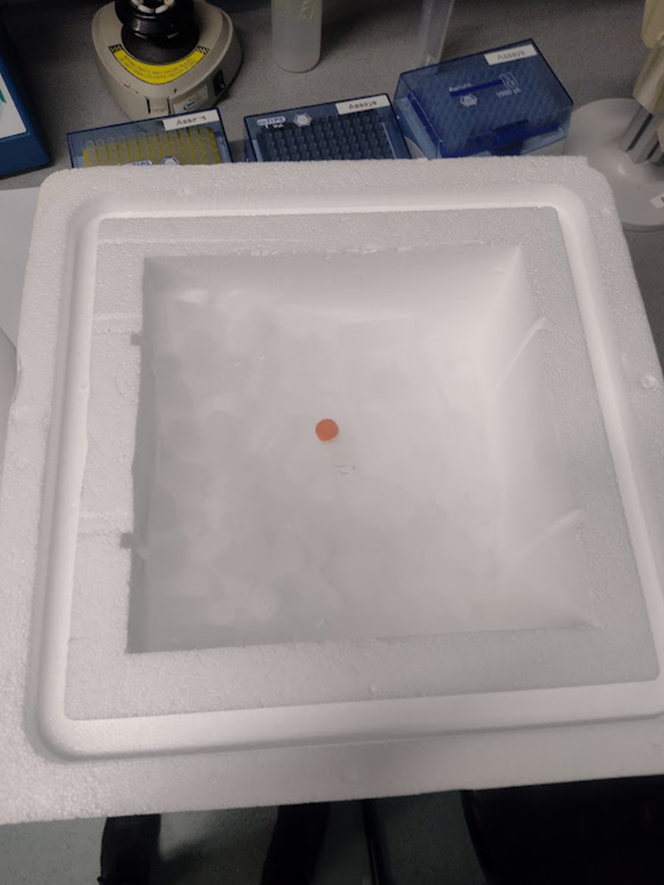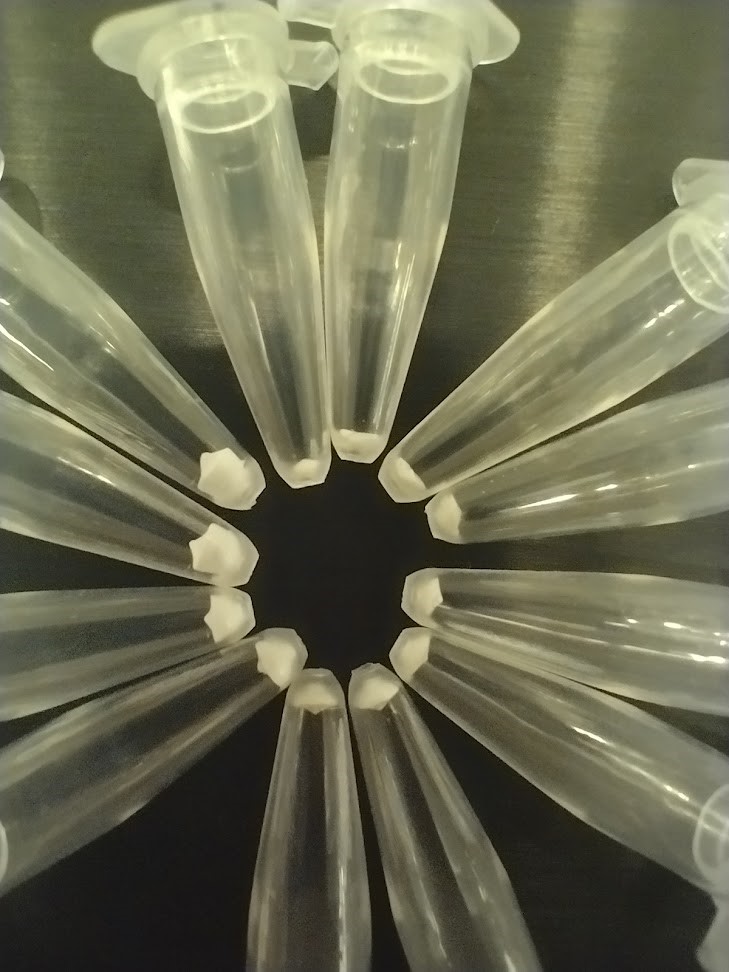The widening discoveries for the use of proteins in different industries such as food, beverage, cosmetic, and pharmaceutical piqued more interest in their application.1 However, perhaps the biggest limiting factor of enzyme usage is the effort that requires for preserving their structure and activity.2,3 The most commonly used method to increase the shelf-life of proteins or enzymes is to keep them frozen, which is not always economically sound or environmentally friendly due to the need of constant refrigeration. Therefore, freeze-drying has been of great interest since the development of the technology, which allows for lighter shipping weight and volume, as well as lower dependency on the cold chain.4


Many proteins and enzymes still require additional protection during the lyophilization process, a relatively harsh procedure, and/or during storage and shipping after reaching dry state. This is often done by mixing in excipients with the enzymes before freezing. These materials are usually amorphous, where some of the most common types of additives are sugars, polyols, and even other proteins or amino acids.5–7
Some excipients act better as stabilizers than others for different enzymes, and there currently exists two popular theories for the mechanism of lyophilized protein stabilization. The first of the two most popular hypothesis is “vitrification theory,” based on the idea that having a shell that can encages the protein into its shape with a material with slower relaxation time at higher temperature would decrease the overall dynamics. The second concept of “water replacement theory” takes into account that proteins hydrogen bond with water molecules in their natural environment, which contributes to the preservation of structure, and focuses on the hydrogen-bonding ability of the excipients.8,9 It has been shown on many occasions that these hypotheses are not universally applicable, posing difficulty in choosing the appropriate additives when freeze-drying different proteins.10,11
The goal of the project is not only to allow stabilizing enzymes of choice using polymers, but also to have a more systemic approach to deepen the understanding of how polymer based additives prevent enzymes from losing their activity under heat and/or humidity. By comparing polyacrylamide and its derivatives with similar yet varying properties such as glass transition temperature, polarity, hygroscopicity, the most pertinent characteristics of excipients can be elucidated.
1. Heckmann, C.M. & Paradisi, F. Looking Back: A Short History of the Discovery of Enzymes and How They Became Powerful Chemical Tools. ChemCatChem 12, 6082- 6102 (2020).
2. Arakawa, T., Prestrelski, S.J., Kenney, W.C. & Carpenter, J.F. Factors affectiong short-term and long-term stabilities of proteins. Adv. Drug Deliv. Rev. 46, 1-8 (2001).
3. Bommarius, A.S. & Paye, M.F. Stabilizing biocatalysts. Chem. Soc. Rev. 42, 6534-6565 (2013).
4.Chen, Y.C. et al. Thermal stability, storage and release of proteins with tailored fit in silica. Sci. Rep. 7, 1-8 (2017).
5. Ragoonanan, V. & Askan, A. Protein stabilization. Transfus. Med. Hemotherapy 34, 246-252 (2007).
6. Jacob, S. et al. Stability of proteins in aqueous solution and solid state. Indian J. Pharm. Sci. 68, 154-163 (2006).
7. Tang, X. & Pikal, M.J. Design of Freeze-Drying Processes for Pharmaceuticals: Practical Advice. Pharm. Res. 21, 191-200 (2004).
8. Chiu, P.L., Kelly, D.F. & Walz, T. The use of trehalose in the preparation of specimens for molecular electron microscopy. Micron 42, 762-772 (2011).
9. Cicerone, M.T. & Douglas, J.F. ß-Relaxation governs protein stability in sugar-glass matrices. Soft Matter 8, 2983-2991 (2012).
10. Yoshioka,S., Miyazaki, T. & Aso, Y. B-Relaxation of Insulin Molecule in Lyophilized Formulations Containing Trehalose or Dextran as a Determinant of Chemical Reactivity. Pharm. Res. 23, 961-966 (2006).
11. Mensink, M.A., Frijlink, H.W.,van der Voort Maarschalk, K.& Hinrichs, W.L.J. How sugars protect proteins in the solid state and during drying (review): Mechanisms of stabilization in relation to stress conditions. Eur. J. Pharm. Biopharm. 114, 288-295 (2017)

